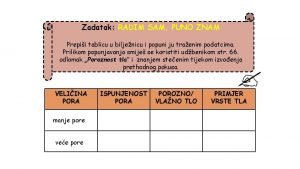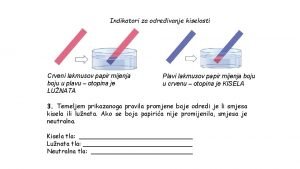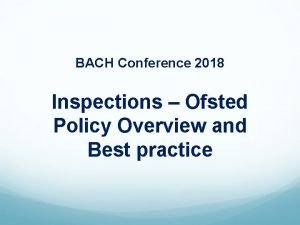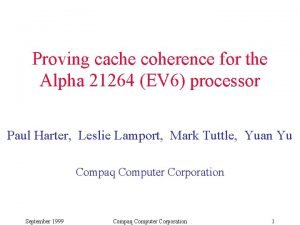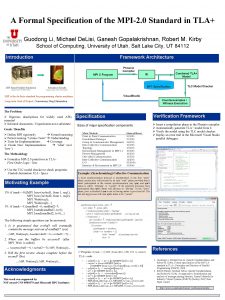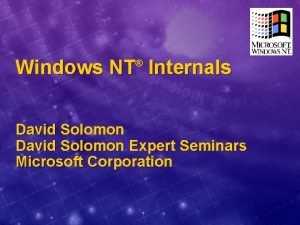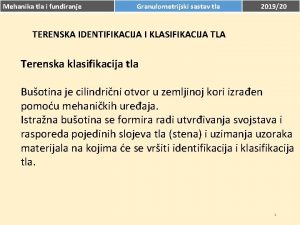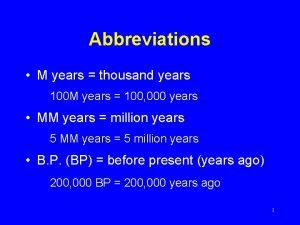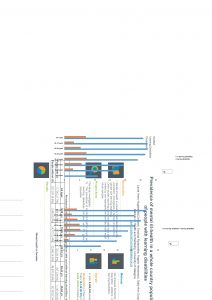TLA at Microsoft 16 Years in Production DAVID









































- Slides: 41

TLA+ at Microsoft: 16 Years in Production DAVID LANGWORTHY MICROSOFT

2002: Specifying Systems

2003: WS-Transaction

April 2015: How AWS Uses Formal Methods

December 2015: Christmas TLA+ December 26 th: Email from Satya to Me & 20 or so VPs Not Common TLA+ is Great We should do this Go!

April 2016: TLA+ School 2 Days Lecture & Planned Exercises 1 Day Spec’ing Goal: Leave with the start of a spec for a real system 80 seats Significant waitlist 50 finished 13 Specs Started Now run 3 times

April 2018 TLA+ Workshop Application of TLA+ in production engineering systems Mostly Azure 3 Execs 6 Engineers Real specs of real systems finding real bugs

Systems Service Fabric Azure Batch Azure Storage Azure Networking Azure Io. T Hub

Product: Service Fabric People Gopal Kakivaya Tom Rodeheffer System: Federation Subsystem


Product: Service Fabric People Gopal Kakivaya Tom Rodeheffer System: Federation Subsystem Invariant violations found by TLC : None noted Insights: Clear definition of system Verification with TLC

Product: Azure Batch People: Nar Ganapathy System: Pool Server Pool. Server manages the creation/resize/delete of pools Has to enforce and maintain batch account quota Need to track persistent data across many operations

Pool. Server A role in Azure Batch Service with multiple instances Responsible for Pool Entity in the REST API Underneath a pool is a collection of VMSS deployments (e. g. , 1000 VMs could be 200 deployments of 50 VMs each) A pool can be really large (can hold 10 K-100 K VMs) Pool. Server manages the creation/resize/delete of pools Has to enforce and maintain batch account quota Maintain subscription quotas Has to build a deployment breakdown of the pool across many subscriptions Create deployments by talking with RDFE/CRP Pool creation is a long process and failovers can happen any time

What did I get out of my experience A compact, precise model of core pool server functionality Real code is several 10 s of thousands of lines Eliminate environmental complications that are not germane to core algorithms E. g. , skipped modeling VMSS mechanisms, updating table storage Relatively easy to explain to someone new Precisely understood the safety and liveness properties Developing the invariants where very valuable and these carried over into the code The TLA+ rigor makes my ability to write asserts more effective I later decided to adopt an MSR state machine runtime called Psharp which has many of the properties of TLA+ but at a much lower level TLA+ model helped me write the safety and liveness properties in Psharp

Product: Azure Batch People: Nar Ganapathy System: Pool Server Pool. Server manages the creation/resize/delete of pools Has to enforce and maintain batch account quota Need to track persistent data across many operations Invariant violations found by TLC : None Noted Insights A compact, precise model of core pool server functionality Precisely understood the safety and liveness properties Developing the invariants was very valuable

Product: Azure Storage People: Cheng Huang System: Paxos Ring Management

Azure Storage v. Next Architecture scale out metadata management keep same consistency and atomicity Partition Master Partition Layer Partition Server Stream Mgr 1 Partition Server Stream Mgr 2 Extent Mgr Stream Layer M M Partition Server scale-out metadata: 1) 1 create stream 2) 2 create extent Stream Mgr Extent Mgr same data path – chain replication Paxos M Extent Nodes (EN) v. Next Master

Managing Many Paxos Rings • Each shard of Stream. Manager and Extent. Manager is a Paxos ring • Xv. Master manages all Paxos rings • not on critical path monitors all nodes and updates the Paxos rings dynamically Dynamic Paxos ring management – two cases Case I: node replacement based on health, clock, etc. when a node is offline for long, replacing it with a new node when node’s clock is skewed, replacing it with a new node Case II: ring resizing in multiple availability zones (AZ) AZ 3 failure reduces ring from 9 to 6 AZ 3 recovery increases ring from 6 to 9 AZ 1 n 2 n 1 AZ 2 n 3 n 4 n 6 n 5 AZ 3 n 9 n 7 n 8

Safety Violation Discovered by TLC • Straightforward node replacement is unsafe To change Ring from {n 1, n 2, n 3} to {n 1, n 3, n 4} • Xv. Master sends a configuration change command to the ring Xv. Master blocks until the configuration change command is confirmed by the ring Xv. Master then sends command instructs n 4 to load RSL engine with the new configuration v. Next Master TLC error trace metadata updates configuration change: replace n 2 w/ n 4 initial ring: {n 1, n 2, n 3} n 1 n 2 n 3 n 4 1. 2. 3. 4. 5. 6. Xv. Master sends configuration command to n 1 (leader) n 1 acks when configuration change succeeded Xv. Master instructs n 4 to load RSL with {n 1, n 3, n 4} network partition => n 1 & n 2 separated from n 3 & n 4 n 3 reboots and Xv. Master sends configuration {n 1, n 3, n 4} n 3 & n 4 elect a new leader => committed data lost

Product: Azure Storage People: Cheng Huang System: Paxos Ring Management Invariant violations found by TLC: Quorum split on server swap Insights Trust the log not the manager

Product: Azure Networking People Albert Greenburg Luis Irun-Briz Andrew Helwer System Ring. Master Global replication Checkpoint coordination Cloud DNS Record propagation Distributed Load Shedding Mac. Sec encryption key rollover orchestration

Problem Statement Goal: Balance checkpoints Guarantee a healthy checkpoint frequency, Allowing for frequent checkpointing To reduce restart time after failure Guarantee a minimum rqps across the cluster, Limiting the simultaneous checkpointing … which freezes updates on that replica for the duration of the checkpoint Avoid common pitfalls: No global time No locks “acquire…release”

Problem Statement w 1 w 2 w 1 P 0 w 1 w 2 S 1 w 2 w 1 S 2 w 1 w 2 S 4 w 1 w 2 S 3 w 2 w 1

Problem Statement w 2 w 1 w 1 w 2 P 0 S 4 S 1 w 2 w 1 100% 80% rqps! w 2 w 1 S 2 S 3 w 2 w 1 w 1

Problem Statement w 2 w 1 w 1 w 2 P 0 S 4 S 1 w 2 w 1 60% rqps! w 2 w 1 S 2 S 3 w 2 w 1

Invariants and Failure Model Safety Invariants: the primary never takes a checkpoint multiple secondary replicas never take a checkpoint concurrently Temporal Invariants: all secondary replicas eventually take a checkpoint always eventually completes or is aborted Failure Model: Replicas crash, then later recover Network links fail between any two replicas in the cluster, then recover The rate of passage of time differing between replicas

Discarded Implementations Simple time slice approach each replica is allocated a slice of time in an uncoordinated round-robin fashion. Checkpoint time is not known. Requires coordination to vary time slice size Local time passage rate can vary between replicas drift out of coordination Inefficient: if a replica is down (or for primary) that time-slot is wasted Pseudo-time slice based on decree numbers instead of real time The rate of new decrees can vary widely inconsistent slices to checkpoint. Still inefficient if replica is down Replicas can see decrees at different times incorrect!

Selected Implementation Randomized round-robin solution: Primary selects a secondary replica Sx to take a checkpoint Weighted so healthier replicas are selected more often. Primary replicates command to issue a checkpoint lease to Sx. All secondary replicas receive & process the checkpoint lease message If the checkpoint lease applies to the secondary replica processing the message, it schedules a checkpoint. Secondary votes to primary carry payload: the last checkpointed decree. Checkpoint Lease Revocation Primary includes timeout on lease, secondary aborts checkpoint at 70% of it. Adaptive Checkpoint Timeouts primary can measure how long a checkpoint took Lease Handover on Primary Failover New primary will see the vote sent by previous primary, and will wait for the timeout.

Selected Implementation Primary Lacks Knowledge of Lease: A brand new cluster with no checkpoint lease issued in its history The following execution trace: 1. Checkpoint lease given to secondary A 2. Secondary A finishes checkpoint before timeout 3. Secondary B dies 4. Secondary B recovers 5. Secondary B is rehydrated from checkpoint created by secondary A 6. Leader dies 7. Secondary B becomes leader Is it safe for the primary to issue a new lease immediately? Yes, as long a replica can only become primary after executing all previous decrees.

Optimization New Primary discards lease to itself: If a replica promotes to primary and sees a checkpoint lease extended to itself. Is it safe for the primary to issue a new lease immediately?

Optimization New Primary discards lease to itself: If a replica promotes to primary and sees a checkpoint lease extended to itself. Is it safe for the primary to issue a new lease immediately? No, n 1 becomes leader n 1 send “n 2 gets lease”(m 1) n 1 gets it n 2 gets “n 2 gets lease” n 2 becomes leader (and ignores the current lease) n 2 send “n 3 gets lease” (m 2) n 2 gets it n 1 dies n 3 gets “n 3 gets lease” n 2 dies n 2 recovers and starts from scratch n 2 gets “n 2 gets lease” (m 1) --> n 2 can take checkpoint n 3 gets “n 2 gets lease” (m 1) n 3 gets “n 3 gets lease” (m 2) --> n 3 can take checkpoint !!

Product: Azure Networking People Albert Greenburg Luis Irun-Briz Andrew Helwer System Ring. Master Global replication Checkpoint coordination Cloud DNS Record propagation Distributed Load Shedding Mac. Sec encryption key rollover orchestration Invariant violations found by TLC: Checkpoint coordination: A sequence of 12 events would cause two replicas to take a checkpoint at the same time Ring. Master Global Replication: accidentally apply a transaction twice. Insights

Product: Cosmos DB People Dharma Shukla Karthik Raman System: Strict Convergence on Multi Master System


5 Consistency Levels Strong Bounded Staleness Eventual Consistency Session Consistent Prefix

Cosmos DB Model 0. 1 Vector Clock • • R 1 R 2 R 3 a b c Conflict Detection Conflict Resolution Database (Replicated) on ti a c li p t Sta e e. R GLSN Database (Replicated) Sta te GLSN ID CONTENT Re plic LSN ID CONTENT atio n Database (Replicated) • • Conflict Detection Conflict Resolution

Cosmos DB Model 0. 2 Vector Clock • • R 1 R 2 R 3 a b c Database (Replicated) on ti a c li p Conflict Detection Conflict Resolution t Sta e e. R GLSN Database (Replicated) Sta te GLSN ID CONTENT PREVIOUS Re plic LSN ID CONTENT PREVIOUS atio n Database (Replicated) • • Conflict Detection Conflict Resolution

Cosmos DB Model Vector Clock • • R 1 R 2 R 3 a b c Conflict Detection Conflict Resolution Database (Replicated) on ti a c li t e e. R y p tro n -E nti A Sta te An ti-E GLSN ID CONTENT Conflict Detection Apply or Drop p Sta Database (Replicated) • • GLSN Re ntr plic LSN ID CONTENT op atio y n Database (Replicated) Tentative Operation Log

Product: Cosmos DB People Dharma Shukla Karthik Raman System: Strict Convergence on Multi Master System Invariant violations found by TLC 0. 1 Replicas diverge due to lack of previous image for performing correct undo. Due to ID conflicts, multi-record correctness issue could happen. 0. 2 State replication was not enough. Missing intermediate version results in divergence. Multi-record conflicts could result in complex list of previous image map. Insights

Observations Syntax is not the problem Starting in isolation is difficult TLC: Anti Runtime Benefits the Author

The End
 Sebutkan 3 proses produksi multimedia
Sebutkan 3 proses produksi multimedia Goat years to human years
Goat years to human years 300 solar years to lunar years
300 solar years to lunar years How long is “four score and seven years”?
How long is “four score and seven years”? Rahlost tla
Rahlost tla Deluvijalna tla
Deluvijalna tla Bilinogojstvo pojam
Bilinogojstvo pojam Glinena prst
Glinena prst Azonalna tla
Azonalna tla Obilježja tla nizinske hrvatske
Obilježja tla nizinske hrvatske Nizinska hrvatska poljoprivreda
Nizinska hrvatska poljoprivreda Edometarski opit
Edometarski opit Apocalipsis 3:20
Apocalipsis 3:20 Nnn машина
Nnn машина Nacionalni parkovi u primorskoj i gorskoj hrvatskoj
Nacionalni parkovi u primorskoj i gorskoj hrvatskoj Kako gujavica doprinosi rahlost tla
Kako gujavica doprinosi rahlost tla Colosenses 3:12 tla
Colosenses 3:12 tla Colosenses 2:15 ntv
Colosenses 2:15 ntv Tla ofsted
Tla ofsted Spiranje tla
Spiranje tla Hechos 2:42 tla
Hechos 2:42 tla Lucas 18 tla
Lucas 18 tla Tla+
Tla+ Tla significado
Tla significado Que es lectura antifonal
Que es lectura antifonal Marcos 6 tla
Marcos 6 tla Crvenice com
Crvenice com Tla+
Tla+ Valjci jezevi
Valjci jezevi Slojevi tla
Slojevi tla Kompakcija
Kompakcija Tla+
Tla+ Microsoft official academic course microsoft word 2016
Microsoft official academic course microsoft word 2016 Microsoft official academic course microsoft excel 2016
Microsoft official academic course microsoft excel 2016 Microsoft microsoft edge startwarren theverge
Microsoft microsoft edge startwarren theverge Microsoft excel merupakan program aplikasi .... *
Microsoft excel merupakan program aplikasi .... * Microsoft official academic course microsoft word 2016
Microsoft official academic course microsoft word 2016 David solomon microsoft
David solomon microsoft Shakespeare early years
Shakespeare early years Jubilee years
Jubilee years What happened eight years ago today
What happened eight years ago today Type of reefs
Type of reefs




